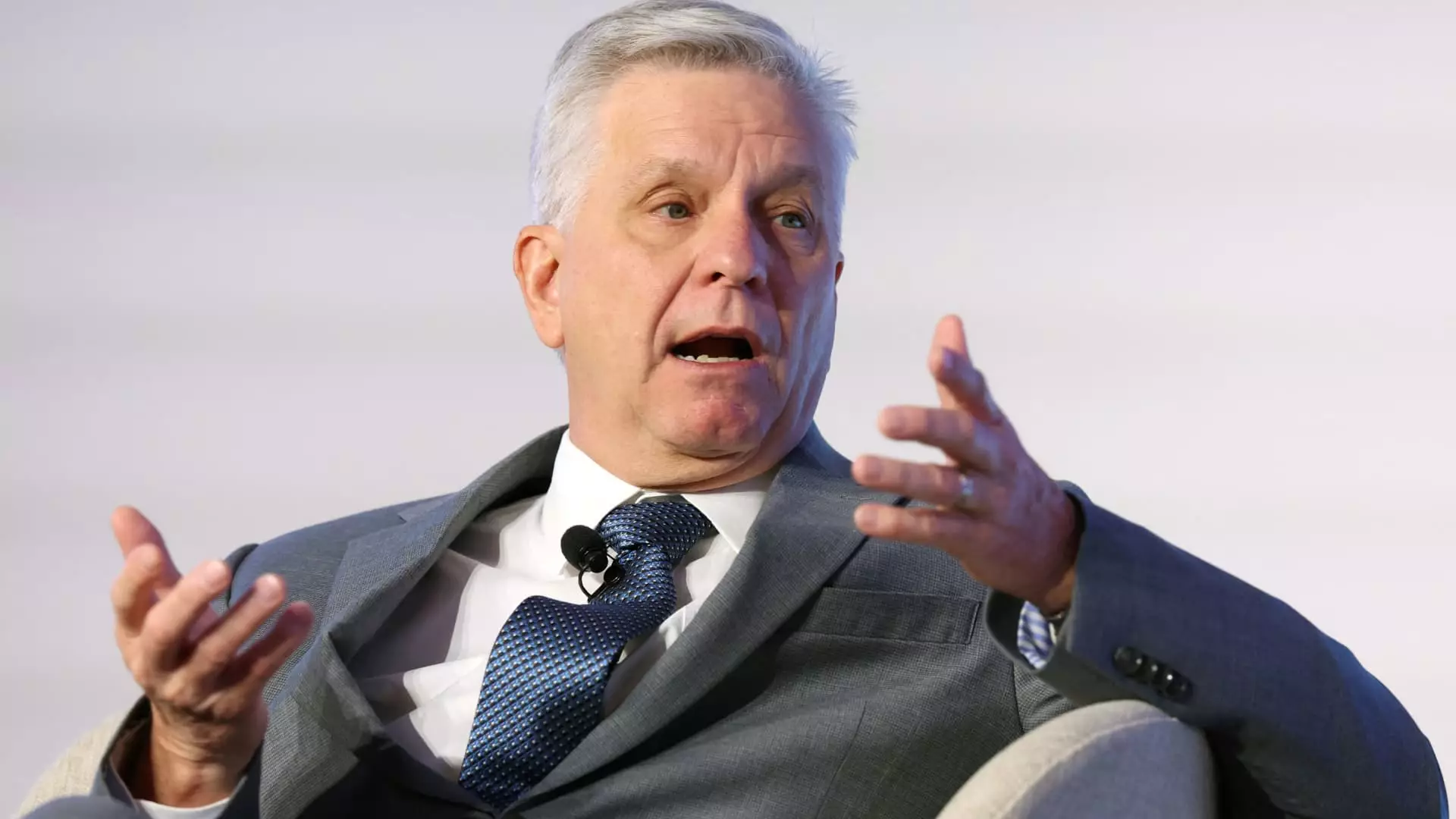In a recent interview, Federal Reserve Governor Christopher Waller made headlines by advocating for an adjustment in the central bank’s interest rate policy, suggesting that the time to cut may be upon us as early as next month. This statement resonates with many economists and market analysts who are tired of the Federal Reserve’s wait-and-see approach. Waller argues that there’s no substantial evidence linking tariffs to rising inflation, asserting that the financial landscape remains stable enough to merit a gradual reduction in interest rates. His beliefs call for a reevaluation of how the Fed responds to perceived economic threats, particularly concerning the labor market.
While some might view Waller’s position as overly optimistic, it’s essential to recognize the weight of his argument. By being cautious and delaying action, the Federal Reserve risks missing opportunities to stimulate the economy before potential downturns manifest. Waller appears to understand this critical juncture. “Why do we want to wait until we actually see a crash before we start cutting rates?” he provocatively asked, highlighting the urgent need for proactive measures rather than reactive ones.
The Stakes of Employment and Growth
Waller’s position draws attention to a broader concern: the health of the labor market. Economic prosperity is intertwined with job security. Therefore, if there is any inclination that the labor market may falter, it is imperative to act decisively. Waller’s advice to “move now” rather than wait for symptoms of economic decline should resonate deeply among policymakers. By lowering interest rates, borrowing costs become less burdensome for businesses and consumers alike, potentially triggering job creation and sustaining the current laborforce’s momentum.
This perspective dovetails with the realities facing many industries where the specter of recession often looms large. With consumer spending habits shifting and uncertainty in the market, businesses are reluctant to invest. Lower interest rates could, in theory, encourage investments in infrastructure and expansions, nurturing economic resilience. Yet, the question remains: will the Federal Reserve be ready to embrace change, or will it continue to backpedal under the guise of caution?
The Political Dimension of Monetary Policy
It’s important to dissect the political undercurrents surrounding Waller’s assertions. Nominally appointed by former President Trump, Waller faces pressure not only from within the Fed but also from the political arena. Trump’s relentless criticism of the Fed’s inaction places tremendous scrutiny on the institution, suggesting that public rhetoric is now entwined with monetary policy. Waller’s remarks may serve to alleviate some pressure from Trump’s call for aggressive rate cuts but also imply a need for the Fed to exhibit its independence in decision-making.
Indeed, this intermingling of political pressures and economic imperatives paints a complex picture. If the goal is to stabilize the economy for all citizens while ensuring that job growth continues unhindered, it might be wise to separate monetary policy from political expediency. Yet, the reality is that any action or inaction by the Fed has far-reaching implications and is invariably viewed through the lens of political narrative.
The Balancing Act of the Federal Reserve
The decision-making process within the Federal Open Market Committee (FOMC) remains a delicate balancing act. Waller’s comments highlight the division among members concerning the future trajectory of interest rates, which remains under scrutiny. Currently, a notable number of committee members appear hesitant to endorse rate cuts despite favorable economic indicators. They are grappling with uncertainties around how external factors, particularly Trump’s tariffs, might impact inflation and employment rates moving forward.
Waller’s belief that the anticipated effects of tariffs would neither trigger prolonged inflation nor disrupt labor markets suggests a confidence in both the resilience of the American economy and the capacity of the Federal Reserve to navigate an uncertain environment. It is crucial, however, for the Fed to align its policies closely with actual economic data rather than speculative forecasts based on apprehensions about external shocks.
Looking Ahead: What’s Next for the Federal Reserve?
As Waller and other committee members ponder their next moves, the eyes of investors and the public remain fixated on the potential outcomes. Market futures reacted positively to Waller’s remarks, suggesting that a shift in interest rate policy is being met with optimism. However, as recent data reflects, the labor market remains buoyed albeit with signs of slowing consumer demand—a factor that could complicate rate adjustments.
Thus, the question lingers: will the Federal Reserve muster the courage to act in anticipation of future economic challenges or will it continue clinging to its status quo? The ongoing dialogue surrounding interest rates will ultimately reflect a fundamental belief in the American economy’s resilience, or a continued hesitation to embrace a proactive stance. The future of economic fortitude may very well lie in the decisions made behind the closed doors of the Federal Reserve.

